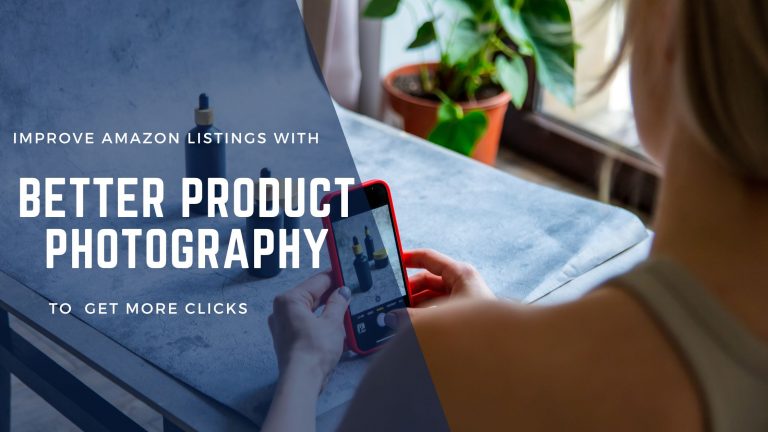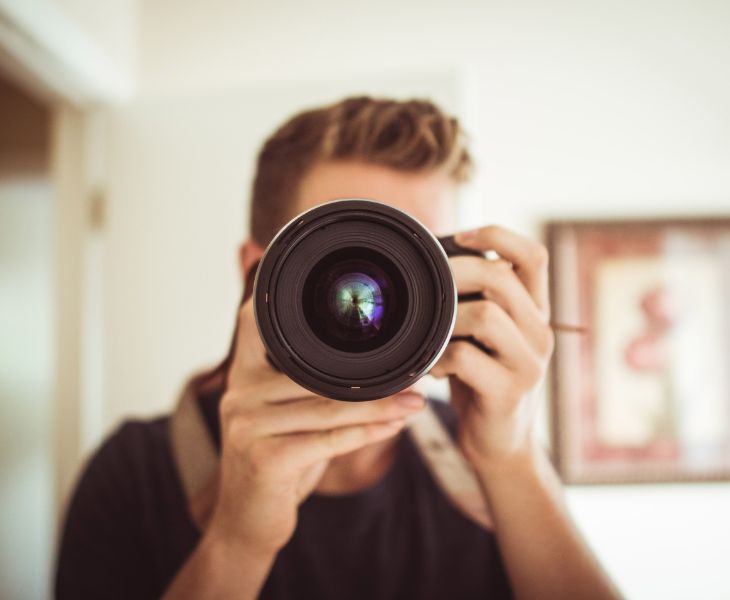Improve your product images to boost click-through rate (CTR) and drive higher conversions.
In the crowded world of Amazon search results, your product image is often the first—and sometimes only—opportunity to grab a shopper’s attention. No matter how great your product is, if your images don't stand out, people won’t click. And without clicks, there are no sales. That’s why product photography is one of the most important factors for increasing your CTR (click-through rate) and overall conversions. In this blog, you’ll learn why visuals matter so much, what makes a great Amazon image, and how to create photo content that drives results.
Why High-Quality Images Matter for Conversions
First impressions count, and on Amazon, they come in the form of your main image. It’s the first thing shoppers see while scrolling search results, and it plays a big role in whether they click on your listing. High-quality images not only boost your CTR but also build trust and confidence. When customers can clearly see the product, understand its size, features, and use case, they’re far more likely to engage with your listing and make a purchase.
Amazon’s image guidelines require your main image to be on a pure white background, with the product taking up at least 85% of the frame. No text, badges, or logos are allowed on the main image, though additional images offer more flexibility. That’s where lifestyle photos come into play—they help customers imagine the product in real-life settings and create an emotional connection. For example, showing a fitness product in use or a kitchen tool in a cooking scene makes it easier for customers to picture themselves using it.
Essential Elements of Great Amazon Product Photos
To create high-converting images, you need a mix of clean, professional visuals and informative graphics. Your primary image should be a high-resolution photo of the product on a white background. This meets Amazon’s compliance standards and makes your listing look clean and credible. But additional images allow you to get more creative.
Lifestyle images are especially important because they show your product in use. A yoga mat displayed in a home workout setting or a backpack shown outdoors communicates purpose and usability in a way plain photos can't. These visuals help customers relate to your product on a practical and emotional level.
Infographics are another powerful tool. They combine visuals with text to highlight features, benefits, and dimensions in a clear, engaging format. For example, you can use callouts to show what materials the product is made from, how to use it, or what makes it better than competitors. When done right, infographics answer common customer questions and reduce friction in the buying process.
All of your images should be high-resolution and zoom-enabled. This means at least 1000×1000 pixels, allowing customers to zoom in for a closer look. The ability to inspect details builds trust and confidence, especially for products where quality and texture matter.
Optimizing Product Images for Higher CTR
Creating images is just the start—optimizing them is how you get better results. One way to know what works best is to run A/B tests. Helium10’s Audience tool allows you to test different versions of your main image (or other visuals) with real audiences. You can compare which image draws more attention or better communicates your product’s value, and then use the winning version on your listing.
Beyond testing, you should also refine your images with better contrast, lighting, and backgrounds. A crisp, well-lit image with bold contrast will always outperform a dull, flat one. Make sure your product is clearly visible, and avoid cluttered or distracting backgrounds in your lifestyle shots. If the photo looks good on mobile and desktop, you’re on the right track.
Another tip is to use subtle text overlays or icons (in secondary images, not the main one) to communicate key features. Highlight your product’s benefits directly on the image—for instance, “100% organic cotton” or “Leak-proof design”—so customers don’t need to hunt through your description. Visual communication is faster and more effective, especially for mobile users who often skim listings.
Hiring a Professional Photographer vs. DIY Photography
When it comes to product photos, quality pays off. If your product is priced above ₹500 or is in a competitive category, it’s often worth hiring a professional photographer. Professionals bring experience in lighting, editing, and product styling, which can make a huge difference in how your product is perceived. A polished, premium look can elevate your brand and justify a higher price point.
However, if you’re just starting out or working with a smaller budget, high-quality DIY photography is possible too. You’ll need a good DSLR or mirrorless camera, natural lighting (or a basic softbox setup), a tripod, and a clean background—preferably a lightbox or white backdrop. Editing tools like Lightroom or Photoshop can help you enhance brightness, contrast, and clarity.
The key to successful DIY photography is consistency. Use the same angles, lighting style, and background for all your shots. Take multiple shots from different perspectives, including close-ups, scale images (to show size), and usage scenarios. Even basic setups can yield professional-looking results if you pay attention to detail.
Conclusion
Your product images are often the deciding factor in whether someone clicks on your listing—or scrolls past it. Great photography builds trust, communicates value instantly, and sets you apart in a sea of lookalike products. By following Amazon’s image guidelines, showcasing your product with high-quality lifestyle and infographic images, and optimizing through A/B testing and visual enhancements, you can dramatically increase your CTR and drive more sales.
Whether you go pro or DIY, remember that investing in better visuals is one of the fastest ways to grow your Amazon business. Start with your main image, improve your secondary photos, and watch your conversions climb.







One Response
very useful sir